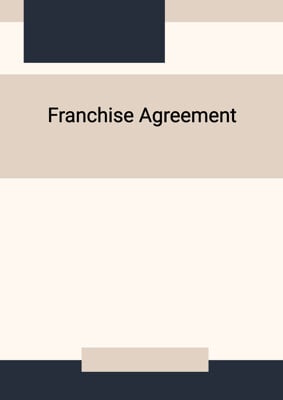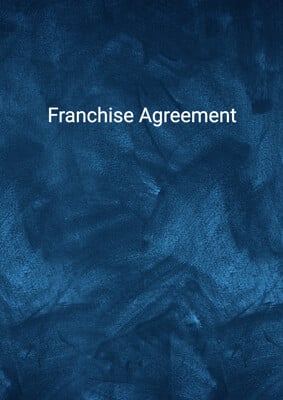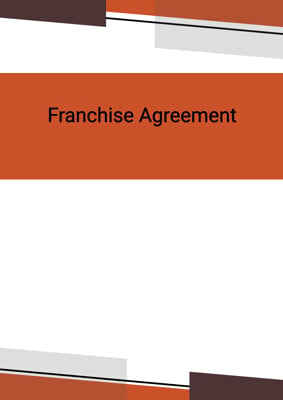How to Tailor the Document for Your Need?
01
Create Document
Fill in the details of the parties. You can click the "Fill with Member’s Information" button to complete it with information saved to your account.
02
Fill Information
Please fill in any additional information by following the step-by-step guide on the left hand side of the preview document and click the "Next" button.
03
Get Document
When you are done, click the "Get Document" button and you can download the document in Word or PDF format.
04
Review Document
Please get all parties to review the document carefully and make any final modifications to ensure that the details are correct before signing the document.
Document Preview
Document Description
A Blogger Advertising Agreement is a legal contract that outlines the terms and conditions under which a blogger or influencer will create and publish content for a brand or company as a form of advertising or promotional activity. This type of agreement is commonly used in influencer marketing and content marketing campaigns. It clarifies the responsibilities, expectations, compensation, and other important aspects of the collaboration between the blogger and the brand.
Key components typically included in a Blogger Advertising Agreement are:
1. Parties Involved: The agreement identifies the parties entering into the contract – the blogger/influencer and the brand/company.
2. Scope of Work: This section outlines the specific tasks, content creation, and promotional activities that the blogger will undertake as part of the campaign. It may include requirements for blog posts, social media posts, videos, photos, and any other content formats.
3. Content Guidelines: Clear guidelines for the type of content, tone, style, and messaging that the blogger should follow to align with the brand's image and values.
4. Timelines: Specific dates and deadlines for content creation, review, and publication. This can include the duration of the campaign as well.
5. Compensation: Details about the compensation the blogger will receive, including payment amounts, schedule, and any additional perks such as free products or services.
6. Rights and Ownership: Specifies the ownership of the content created – whether the brand or the blogger retains ownership, and how the content can be used by both parties.
7. Disclosure and Compliance: Clearly states that the blogger will comply with all applicable laws and regulations, including disclosing the sponsored nature of the content as required by advertising disclosure guidelines.
8. Confidentiality: Addresses the confidentiality of any non-public information shared between the parties during the collaboration.
9. Termination: Specifies the conditions under which either party can terminate the agreement, including reasons and notice periods.
10. Indemnification: Outlines the responsibilities of each party to indemnify the other against any legal claims arising from the content or the collaboration.
11. Governing Law: Specifies the jurisdiction whose laws will govern the agreement in case of any disputes.
12. Miscellaneous Clauses: These can include clauses related to force majeure (unforeseen events), amendments to the agreement, entire agreement clause, and other legal provisions.
It's essential for both parties to carefully review and negotiate the terms of the Blogger Advertising Agreement to ensure a clear understanding of their roles and obligations. If you're not familiar with legal contracts, it's recommended to seek legal advice to ensure that the agreement is comprehensive and legally sound.
How to use?
1. **Understanding the Agreement:**
Familiarize yourself with the Blogger Advertising Agreement. This document outlines the terms and conditions under which you will display advertisements on your blog, as well as how you will be compensated for this.
2. **Customization:**
If the agreement is a template, customize it to reflect the specifics of your arrangement. This might include details like your blog's name, URL, ad placement guidelines, compensation terms, and any additional obligations or restrictions.
3. **Negotiation (if applicable):**
If you're working with an advertiser or agency, there might be room for negotiation. Discuss any modifications you'd like to make to the agreement and ensure both parties are comfortable with the terms.
4. **Signing Parties:**
Identify the parties involved in the agreement. Typically, this will be you (the blogger) and the advertiser or their representative.
5. **Effective Date:**
Specify the date on which the agreement becomes effective. This is usually the date when both parties sign the agreement.
6. **Terms and Conditions:**
Clearly define the terms and conditions of the advertising arrangement. This includes details like the type of ads that will be displayed, the frequency of ads, ad placement on your blog, and any restrictions on content.
7. **Compensation:**
Outline how you will be compensated for displaying the ads. This could be a fixed fee, a commission based on clicks or conversions, or another arrangement. Include details on payment frequency and method.
8. **Ad Placement Guidelines:**
Describe the guidelines for ad placement to ensure a seamless integration of ads into your blog's design and layout.
9. **Content Approval:**
Specify whether you or the advertiser have the right to approve the ad content before it goes live on your blog. This helps maintain the quality and relevance of the ads to your audience.
10. **Termination and Remedies:**
Detail the circumstances under which either party can terminate the agreement. Also, include any remedies or consequences for breaches of the agreement.
11. **Confidentiality:**
If necessary, include a clause about keeping certain aspects of the agreement confidential.
12. **Governing Law and Dispute Resolution:**
Mention the jurisdiction whose laws will govern the agreement and how disputes will be resolved (e.g., through arbitration or litigation).
13. **Signatures:**
Once both parties are satisfied with the terms, sign the agreement. This can be done physically or electronically, depending on the method you've agreed upon.
Not the right document?
Don’t worry, we have thousands of documents for you to choose from:




































